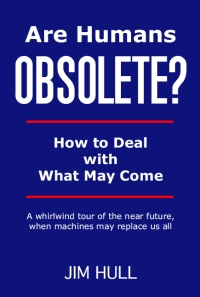“The world is a mystery. This, what you’re looking at, is not all there is to it. There is much more in the world, so much more, in fact, that it is endless. So when you’re trying to figure it out, all you’re really doing is trying to make the world familiar.” — Carlos Castaneda, Journey to Ixtlan
When I was a kid, a tradesman came to the house to repair something, and I followed him around, chatting and asking questions. (I was an annoying gabber even back then.) Finally he stopped what he was doing, found a baseball in our garage, handed it to me, and said, “See the stitches?”
“Yeah.”
“Okay. I want you to follow those stitches along the seam until you come to the end of it, and then let me know.” He handed me the ball and walked away. I rotated the ball, following the seam all the way around once, twice, and then I called out to him: “It never ends.”
It was my first experience of something infinite that I could hold in my hand.
On a recent TV drama, a teacher explained to a high school math class that Pi — the ratio of the length of a circle to its diameter, which begins “3.14159 . . . ” — is an infinitely long number whose decimal appears random yet contains every bit of information in the universe, including the teens’ telephone numbers, the dates of their births, all the information about everyone’s lives, past and present, and so on and so on.
I thought, “Wow. Infinity is pretty big.”
I have no clue.
There’s a hypothesis bouncing around in the world of science that suggests ours may be merely one of many, many universes — a multiverse. In fact, the math indicates it’s possible we’re nested within an infinite collection of universes. It turns out this isn’t a brand-new idea: Friar Giordano Bruno was burned at the stake in 1600 for suggesting that God had the power to create an infinity of universes; the Vatican didn’t appreciate that this would relegate them to a distant sideline instead of the center of things; hence, all the smoke and flames and screaming. But we can’t make the truth go away by trying to punish it. To misquote Galileo: “And yet it may be true.” Also, over the centuries, the math has improved.
It gets weirder: this infinity of universes would contain infinite copies of you and me and everyone. And why not? Like I’ve said, infinity is pretty big. Anyway, when I heard about this, I thought of all the mistakes I’d made in life, and said out loud, addressing all my doppelgangers: “Sorry, guys!” Then I realized they must be saying the same thing back. It felt like a hall of mirrors.
Could each of the subatomic particles inside our atoms be made up, in turn, of smaller and smaller things — some of them entire universes themselves — receding to infinitesimal size? Quantum Mechanics and String Theory seem to put a limit on how small things can get. A millimeter is one thousandth of a meter, or 10 to the minus 3, which you can see easily: it’s about the length of a standard printed comma (“,”). The Planck Length is roughly 10 to the minus 35 meters, or 1/100000000000000000000000000000000000 of a meter. Each of those zeroes makes it ten times smaller. It’s unimaginably tiny. Smaller than that, scientists theorize, nothing exists. Of course, mathematicians can imagine much smaller numbers, like a Googolth, which is 10 to the minus 100, or 1/10000000000000000000000000000000000000000000000000000000000000000000000000000000000000000000000000000. Now we’re getting somewhere! (Or, nowhere, as the case may be.)
Once you’ve swallowed all this, it’s time to consider the possibility that you don’t exist at all, except as lines of code in somebody’s computer simulation of a planetful of people and things. In theory it’s possible, with the aid of really big supercomputers, to simulate large groups of people to great accuracy, and any such simulation would likely contain thousand or millions of sentient beings going about their business unawares. Eventually, such simulations could evolve to the point where the replica citizens create their own computer simulations, with millions of individuals inside. And so on … at least, until somebody bounces off the Planck limit of the original outside universe.
…Or maybe not? Maybe the Planck Length somehow resets itself inside every simulation.
So keep an eye out for glitches, like a black cat who walks twice past your door. In the same direction. Within a half second. If you see that, you’re free to get nervous. If you never see that, you’ll still have to reckon with all those copies of you, out there in their various universes, living your same life. It’s not just the Vatican who’s been made insignificant: we all may be mere samples in an echo chamber out to infinity.
And all of it is tracked inside the off-kilter fraction of one single number. Right there, right next to us, lies Pi, and inside it — its infinite length zooming quickly past anything we can ever hope to conceive — is contained every detail of every one of us, over and over, forever.
Somehow, this beats baseball stitches all to Hell.
.





Rob Schwartz AIA
2013 January 15
Jim:
Actually, the legend written a century after the event has Galileo recanting before the Inquisitorial Tribunal his forceably-repudiated writings concerning the helio-centrism of the solar system. As he bowed to leave that Tribunal with a life sentence for home confinement he is reported to have said soto voce: “Eppur si muove” (which roughly translates as “Nevertheless, they [the celestial bodies] move.”
As to the matter of infinity:
“Larger fleas have smaller fleas,
Upon their backs to bite them.
And they in turn have smaller fleas,
And so on, ad infinitum.”
Rob Schwartz AIA
Jim Hull
2013 January 15
Since we’ll never know whether Galileo actually said it, I felt safe in misquoting him.
🙂
Love the flea ditty! It’s a classic, and kind of sums up the entire second half of my essay. (I need to be more pithy!)
Here’s another one: In a country where they believed by tradition that the world sat atop a turtle, an elderly lady was asked, “What’s under the turtle?” She replied, wagging her finger, “Oh, you cannot fool me! It is turtles all the way down!”